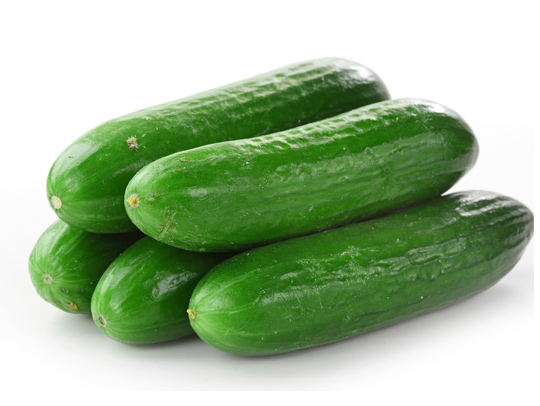ITC Reports Confirm Mexican Imports Needed to Meet Increased U.S. Consumer Demand for Cucumbers and Squash
January 20, 2022 | 4 min to read

NOGALES, Az. – The U.S. International Trade Commission (ITC) recently issued reports summarizing its findings from its investigations on the U.S. cucumber and squash industries and the effect that imports had on seasonal growers. The ITC’s reports provided a comprehensive review of the U.S. and Mexican cucumber and squash industries and a thorough analysis of the key competitive market conditions.
The ITC reports do not support the U.S. Southeast growers’ simplistic reaction to reflexively blame Mexican imports for all of their problems, said Lance Jungmeyer, President of the Fresh Produce Association of the Americas (FPAA.) In fact, the report notes the difficulties faced by domestic Southeast growers are largely out of anyone’s control – the difficulty in finding labor and the fact that climate/weather in the Southeast does not favor advanced growing methods such as greenhouses.
“The ITC conducted a thorough investigation that provides a fair and balanced overview of the many factors affecting the U.S. cucumber and squash market, especially given the fact that Mexican imports are highly differentiated from the competition in terms of varietal selection and packing standards,” Jungmeyer said. “Consumer demand for Super Select cucumbers, fancy cucumbers and unblemished squashes are the factors driving the marketplace.”
In reviewing the ITC reports, FPAA took note of the following findings.
- Imports are needed to meet increasing U.S. consumer demand for a broader range of cucumbers and squash
American consumer demand for cucumbers and squash has increased or stayed strong as more Americans are eating more fresh vegetables as part of a healthier diet. U.S. cucumber and squash production cannot meet total U.S. consumer demand for cucumbers and squash year round and imports, primarily from Mexico, are needed to fill that gap. Most Mexican imports enter during November through May when domestic production is not readily available (i.e., only from Florida).
The ITC report also noted that imports have increased because of shifts in U.S. consumer demand for cucumbers and squash to prefer a broader range of varieties. Most Southeast cucumbers growers are still growing only American slicers in open fields. Mexican growers are using protected agriculture to grow burpless and snacking varieties of cucumbers, including English, Persian and mini cucumbers. Southeast growers cannot meet this growing cucumber market segment. “The market is demand-driven. The ITC report showed that Mexican cucumbers are sold for $2-3 a box more than US cucumbers at terminal markets in Eastern cities, where demand tracks closely with local customer preference,” Jungmeyer said, adding, “There is a clear market preference for the Mexican cucumber.”
For instance, the AMS East Coast average prices for U.S.-grown medium conventional American slicing cucumbers in one and one-ninth bushel boxes ranged from $14.34 to $35.00 per box from 2015 to 2020, while cucumbers from Mexico ranged from $17.25 to $37.13 per box, according to the ITC cucumber report.
- No evidence of Mexican imports underselling U.S. cucumbers, squash
The ITC reports note that prices for domestic and imported cucumbers and squash are often very similar and tend to follow largely the same trends.
- U.S. growers face challenges unrelated to imports
Southeast growers blame Mexican imports as the primary source of their problems. But the ITC report clearly identifies many issues that are not related to Mexican imports that negatively impact the Southeast US growers.
Labor cost, availability – Higher labor costs and limited labor availability hinder U.S. growers by causing higher production costs, lower productivity yields, and fewer product type. US growers have increasingly used temporary migrant workers entered under the H2A visa program, but H2A workers account for only about 10% of all U.S. crop workers. The lack of domestic labor results in quality differences that make U.S. product less appealing to U.S. retail customers compared to Mexican imported products.
Difficult climate, growing conditions – The high humidity and unique climate and growing conditions Southeast U.S. brings unique challenges to cucumber and squash growers. Southeast growers must deal with climate-related pest and disease pressures that elevate production costs due to the need to apply significant amounts of pesticides and fungicides. The potential for crop damage or losses from hurricanes and tropical storms negatively impacts Southeast growers.
In addition to holding a public hearing with numerous industry witnesses presenting testimony, the ITC conducted its own independent research and interviewed many industry witnesses. The ITC’s findings reflect a solid understanding of the complexities of the many different factors that affect the ever-changing supply and demand conditions of the cucumber and squash markets, according to the FPAA.
About the Fresh Produce Association of Americas:
The FPAA is a nonprofit trade association headquartered in Nogales, Arizona, that represents over 120 U.S. member companies involved in distributing, sales and transportation of fresh fruits and vegetables grown in Mexico. The FPAA leverages the efforts of private companies and partner-associations to increase the consumption of fresh fruits and vegetable from Mexico.
